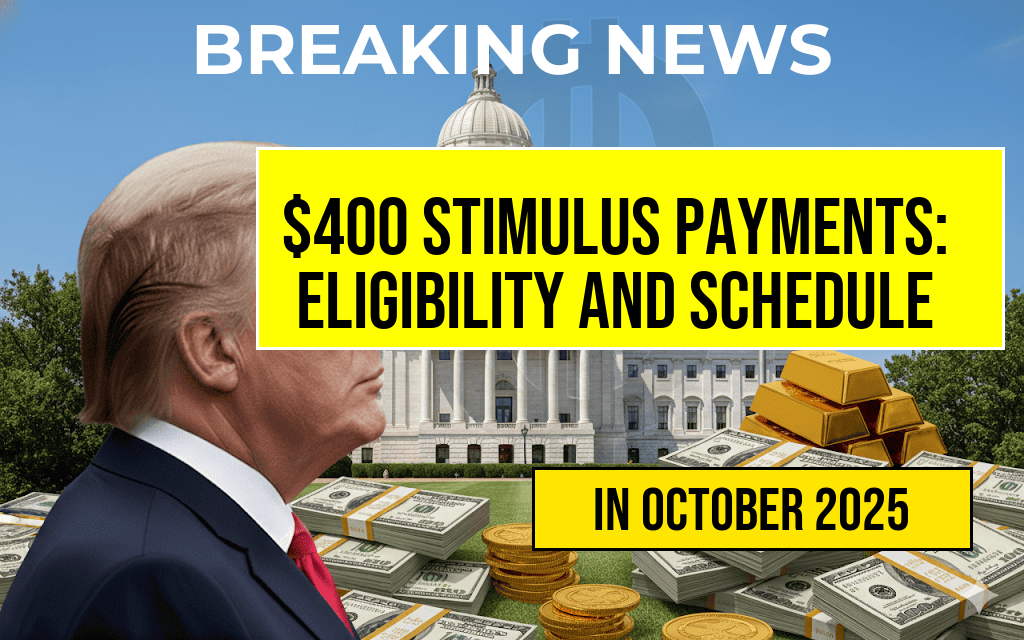As the economic landscape continues to evolve, various states across the U.S. have introduced stimulus payments to support residents facing financial challenges. One such initiative offers $400 stimulus payments aimed at assisting eligible individuals and families. This comprehensive guide outlines the eligibility criteria, payment schedule, and essential details for those looking to benefit from this program.
Eligibility Criteria for the $400 Stimulus Payments
The $400 stimulus payments are designed to assist a wide range of individuals, but specific eligibility requirements must be met. Below are the primary criteria:
- Residency: Applicants must be residents of the state providing the stimulus payments.
- Income Limitations: Individuals or households must fall below a certain income threshold, which varies by state.
- Age Requirement: Applicants typically need to be at least 18 years old, though some states may extend benefits to dependents.
- Filing Status: Those who have filed their taxes, whether as individuals or jointly, are often prioritized.
How to Apply for the $400 Stimulus Payment
Applying for the $400 stimulus payment generally involves a straightforward process, although specifics may differ by state. Here are the typical steps:
- Visit the State’s Website: Most states will have a dedicated portal for stimulus applications.
- Provide Necessary Documentation: Prepare to submit proof of residency and income, as well as your Social Security number.
- Complete the Application Form: Fill out the required forms accurately and submit them online or via mail, depending on the state’s guidelines.
- Check Application Status: After submission, applicants can usually track their application status through the same portal.
Payment Schedule for the $400 Stimulus Payments
The payment schedule for the $400 stimulus payments will vary from state to state. Below is a general outline of the timeline you might expect:
| State | Application Period | Expected Payment Date |
|---|---|---|
| California | January 1 – March 31 | Mid-April |
| Texas | February 1 – April 30 | Early June |
| Florida | March 1 – May 31 | Late June |
While these dates are estimates, it’s crucial for applicants to check their specific state’s announcements for the most accurate information.
Frequently Asked Questions
Can I receive the payment if I am unemployed?
Yes, many states include unemployed individuals as eligible recipients as long as they meet the other criteria, such as residency and income limits.
Will the payment be taxed?
Typically, stimulus payments are not considered taxable income at the federal level, but it is advisable to consult a tax professional for specific state guidelines.
Are there any exceptions to the eligibility criteria?
Some states may have additional provisions or exceptions based on unique circumstances, such as veterans or individuals with disabilities. Always check with your state’s official resources for detailed information.
The $400 stimulus payment initiative aims to provide critical financial relief and support to many Americans. For the most accurate and up-to-date information, residents should refer to their state’s official website or consult resources such as Forbes and Wikipedia.
Frequently Asked Questions
What are the eligibility criteria for the $400 stimulus payments?
To qualify for the $400 stimulus payments, individuals must meet specific income thresholds, residency requirements, and other criteria set by the government. Generally, those who filed taxes in the previous year and meet the income limits are eligible.
When will the $400 stimulus payments be distributed?
The complete payment schedule for the $400 stimulus payments varies by state and payment method. Most payments are expected to be distributed in several phases, with exact dates announced by local governments.
How will I receive my $400 stimulus payment?
Eligible individuals can receive their $400 stimulus payment through various methods, including direct deposit, checks, or prepaid debit cards, depending on the information provided when filing taxes.
What should I do if I don’t receive my $400 stimulus payment?
If you do not receive your $400 stimulus payment within the expected timeframe, it is advised to check the official government website for updates and instructions on how to report the issue or request a replacement.
Is there a way to check my eligibility for the $400 stimulus payment?
Yes, individuals can check their eligibility for the $400 stimulus payment by visiting the official government website, where they can find detailed information based on their financial status and residency.

Leave a Reply